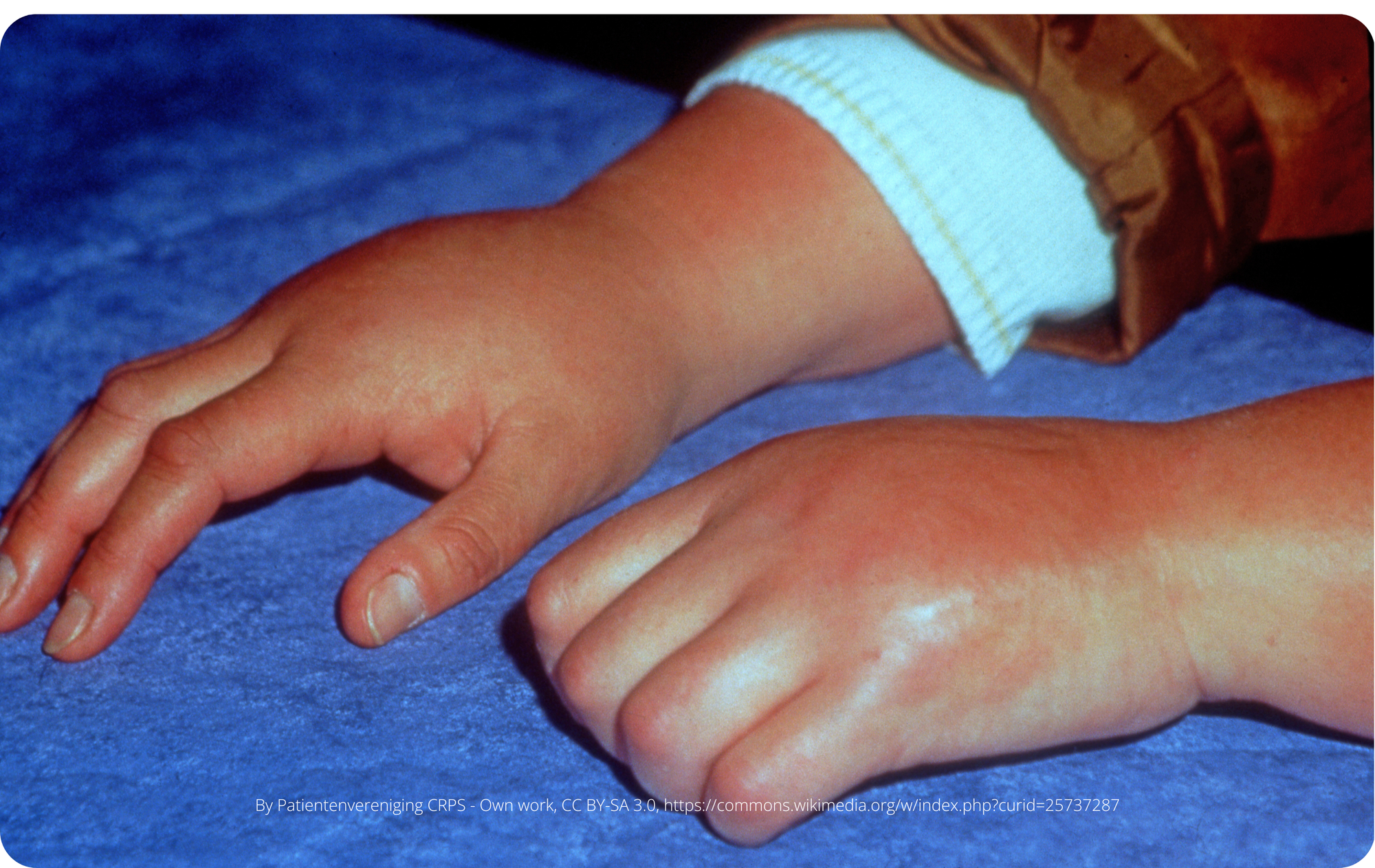
Clinical Scenario
A 51-year-old female presents with a 4-month history of persistent burning pain in her right hand following a distal radius fracture. The fracture was treated conservatively in a cast for 6 weeks. She reports that the pain has worsened since the cast was removed, and it radiates up her arm without a specific dermatomal pattern. The patient describes severe allodynia—simple touch, such as clothing brushing against the skin, causes extreme pain. She has also noticed swelling, a slight color change to her hand, and increased sweating.
Past medical history includes a 10-year history of migraines and a diagnosis of osteoporosis, for which she is on alendronate.
Objectives:
- Perform a focused history and clinical examination for the diagnosis of CRPS
- Generate a differential diagnosis for her symptoms and justify each diagnosis.
- Identify and justify key investigations that will confirm the diagnosis.
- Formulate an appropriate management plan, including non-surgical and surgical interventions.
- Discuss the potential complications of CRPS and their management.
- Explore advanced theoretical aspects, including CRPS pathophysiology and the role of the sympathetic nervous system.
Primary Contributor: Dr Waruguru Wanjau, Educational Fellow.
Reviewer: Dr Suzanne Thomson, Educational Fellow.
This is for thePlasticsPro
Join the Club to enjoy unlimited access to all of thePlasticsFella.
Join the Club

